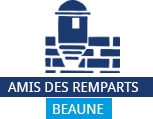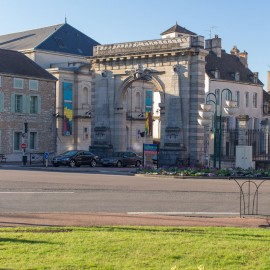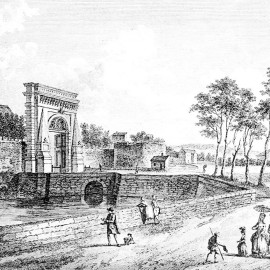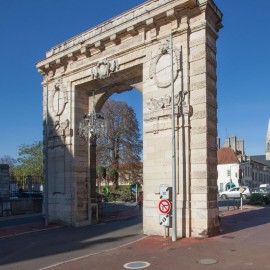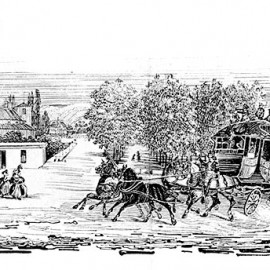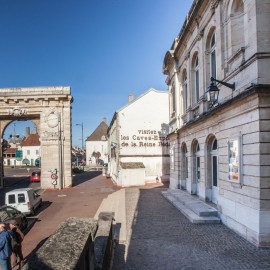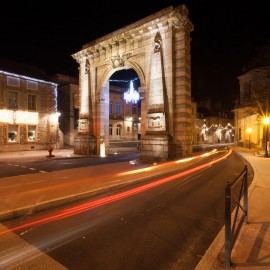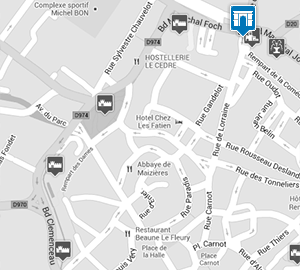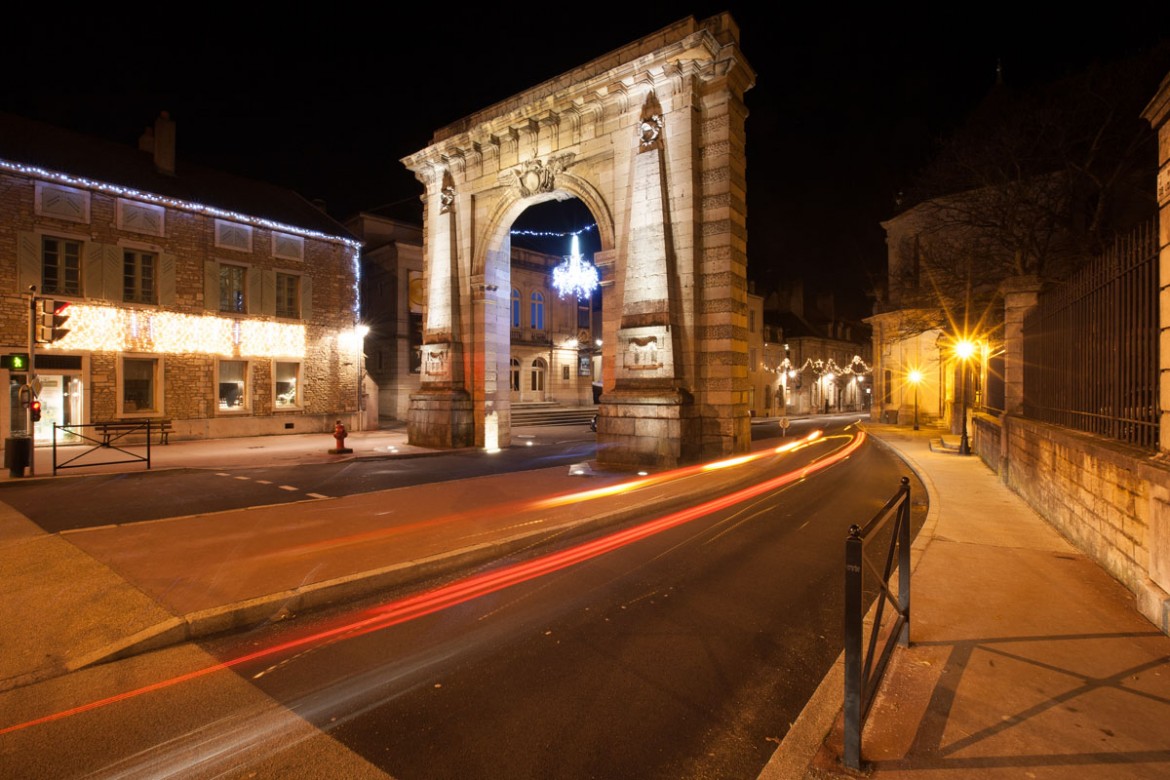
La porte Saint-Nicolas
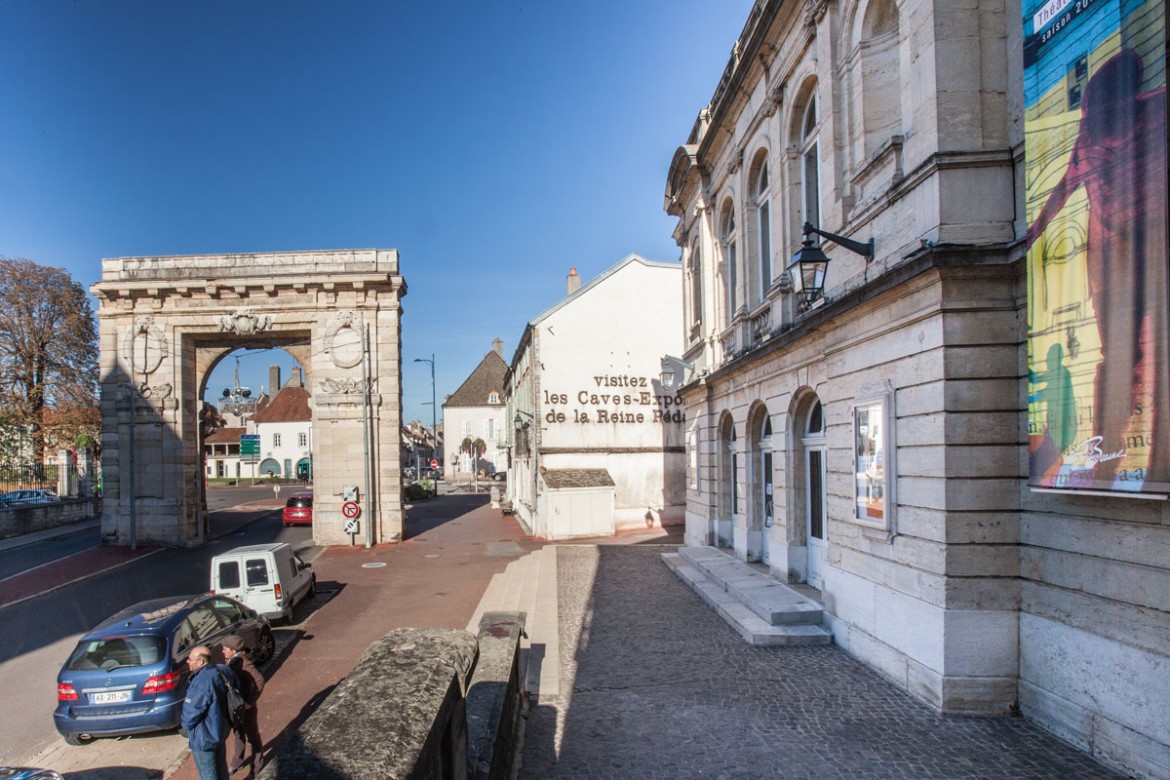
Ancienne porte fortifiée avec pont-levis
This old fortified gate with drawbridge, known as the Porte du Bourgneuf, witnessed the entry of many important personalities: in 1548 Henri II, accompanied by Catherine de Medici, was welcomed by the canons under a freshly-painted triumphal arch to the sound of tambourines; in 1594 Charles IX, accompanied by the Queen Mother, made a short visit; and the gate was decorated again for the entrance of Louis XIII, en route for the Alps in 1629, then for Queen Anne of Austria the following year. But the most ceremonial entry was that of Louis XIV and the Queen, on 19 and 20 November 1658, when the canon was fired.
From 1770, visitors from the north were greeted at an impressive new gate, designed by the Dijon architect Nicolas Lenoir (also known as Lenoir Le Romain), part of the city modernisation program of the Mayor, Mr. Maufoux.
As part of our guided tours, you can admire the decorations of Porte Saint Nicolas, the details of which are remarkably well-preserved
The Italian-style municipal theatre (1864). Opposite is the 18th-century Chapelle de l’Oratoire (frequent exhibitions).
Rue de Lorraine, running from Porte Saint Nicolas, for its many mansions with superb Renaissance facades and for its shops.
The former Ursuline convent, built in 1697, which became the Hôtel de Ville (City Hall) in 1794.
Rue du Collège, for the Caves Patriarche in the former Visitandines convent and its restored chapel.
Rue de Chorey (the other side of the boulevard), for the 19th century Carmelite convent with its statue of the Little King of Grace.
The map
To visit
- Château de Beaune
- Tour Renard
- Le Bastion Saint Anne
- Tour des Poudres
- Grosse Tour
- Tour des Billes
- The Lavoir
- Tour des Cordeliers
- Bastion Bretonnière or Condé
- Tour des Dames
- Bastion Saint Martin
- Tour des Filles or de l’Oratoire
- La Porte Saint Nicolas
- The Théâtre – Bastion Saint-Nicolas
- Théâtre de Verdure
- Bastion Notre Dame
- Tour Blondeau
